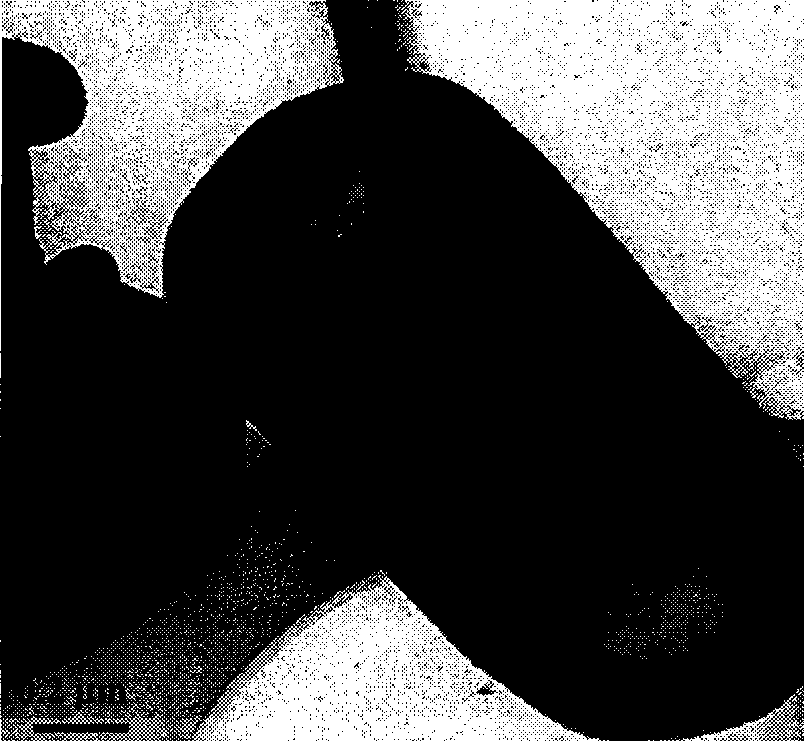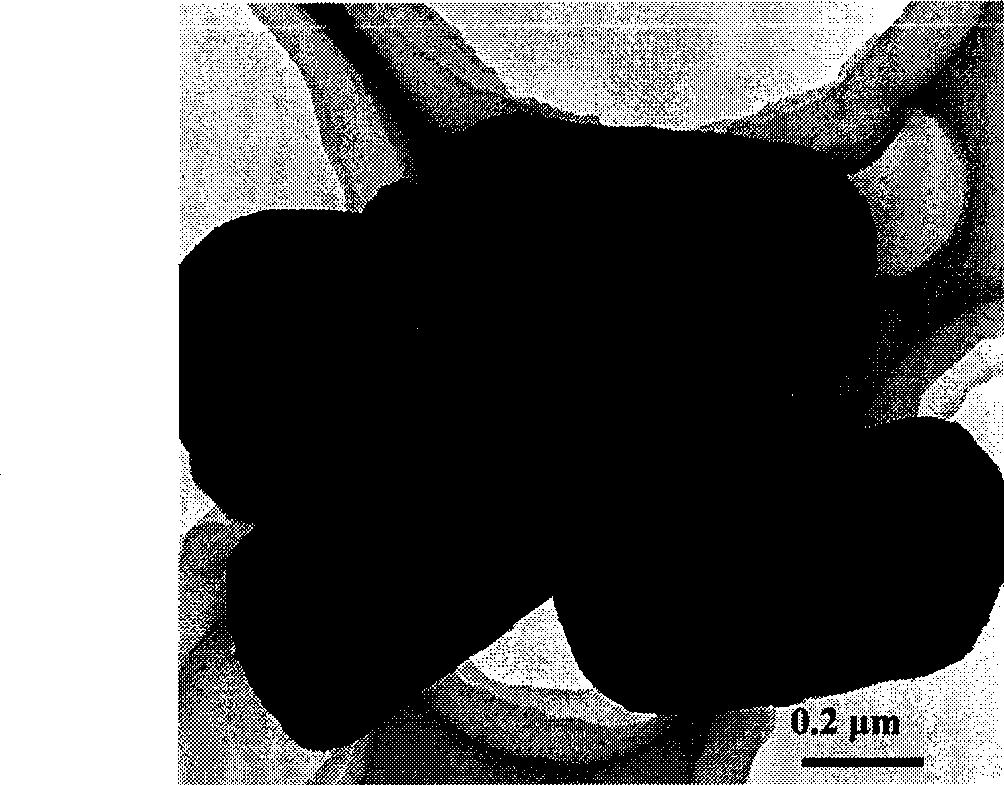Method for controlling micrometre zinc sulphide morphology by Escherichia coli biological template
A technology of Escherichia coli and biological templates, applied in the direction of zinc sulfide, etc., can solve the problems of difficult control of particle shape and size, and achieve the effect of improving shape and stability, improving conversion rate, and great practical significance
- Summary
- Abstract
- Description
- Claims
- Application Information
AI Technical Summary
Problems solved by technology
Method used
Image
Examples
Embodiment 1
[0020] Prepare 50 ml of LB liquid medium, introduce Escherichia coli strains, and culture on a shaker at 200 r / min at 37°C for 12 hours. Then place the E. coli culture solution on ice for 10 minutes, centrifuge at 6°C, 3000r / min for 15min, discard the supernatant, dissolve the precipitate in 40ml of deionized water, and centrifuge at 6°C, 3000r / min for 15min for hypotonicity. Repeat once and take the pellet. The precipitate was dissolved in 40ml, 0.01mol / L of Zn(CH 3 COO) 2 2H 2 O solution (pre-cooled in a refrigerator at 4°C), mix well, let stand on ice for 5 minutes, centrifuge at 6°C, 3000r / min for 15min, and collect the precipitate. Redissolve the precipitate in 40ml of pre-cooled 0.01mol / L Zn(CH 3 COO) 2 2H 2 O solution, mixed thoroughly to obtain competent cells. Weigh 0.091g of CS(NH 2 ) 2 Add it to the competent cell suspension, place it on ice for 10 minutes, let it stand in a refrigerator at 4°C for 20 hours, heat shock it in a hot water bath at 35°C for 1 m...
Embodiment 2
[0022] Prepare 50ml of LB liquid medium, introduce Escherichia coli strains, and culture on a shaker at 150r / min at 37°C for 17h. Then place the E. coli culture solution on ice for 10 minutes, centrifuge at 4°C, 4000r / min for 10min, discard the supernatant, dissolve the precipitate in 40ml of deionized water, and centrifuge at 4°C, 4000r / min for 10min for hypotonicity. Repeat twice and take the pellet. The precipitate was dissolved in 40ml, 0.1mol / L of Zn(CH 3 COO) 2 2H 2 O solution (pre-cooled in a refrigerator at 4°C), mix well, let stand on ice for 10 minutes, centrifuge at 4°C, 4000r / min for 10 minutes, and collect the precipitate. Redissolve the precipitate in 40ml pre-cooled 0.1mol / L Zn(CH 3 COO) 2 2H 2 O solution, mixed thoroughly to obtain competent cells. Weigh 0.912g of CS(NH 2 ) 2Add it to the competent cell suspension, place it on ice for 20 minutes, let it stand in a refrigerator at 4°C for 40 hours, heat shock it in a hot water bath at 42°C for 3 minutes...
Embodiment 3
[0024] Prepare 50ml of LB liquid medium, introduce Escherichia coli strains, and culture on a shaker at 120r / min at 37°C for 20h. Then place the E. coli culture solution on ice for 20 minutes, centrifuge at 0°C, 5000r / min for 8min, discard the supernatant, dissolve the precipitate in 40ml of deionized water, and centrifuge at 0°C, 5000r / min for 8min for hypotonicity. Repeat twice and take the pellet. The precipitate was dissolved in 40ml, 0.1mol / L of Zn(CH 3 COO) 2 2H 2 O solution (pre-cooled in a refrigerator at 4°C), mix well, let stand on ice for 15 minutes, centrifuge at 0°C, 5000r / min for 8 minutes, and collect the precipitate. Redissolve the precipitate in 40ml pre-cooled 0.1mol / L Zn(CH 3 COO) 2 2H 2 O solution, mixed thoroughly to obtain competent cells. Weigh 0.912g of CS(NH 2 ) 2 Add it to the competent cell suspension, place it on ice for 30 minutes, let it stand in a refrigerator at 4°C for 100 hours, heat shock it in a hot water bath at 45°C for 5 minutes,...
PUM
 Login to View More
Login to View More Abstract
Description
Claims
Application Information
 Login to View More
Login to View More - R&D
- Intellectual Property
- Life Sciences
- Materials
- Tech Scout
- Unparalleled Data Quality
- Higher Quality Content
- 60% Fewer Hallucinations
Browse by: Latest US Patents, China's latest patents, Technical Efficacy Thesaurus, Application Domain, Technology Topic, Popular Technical Reports.
© 2025 PatSnap. All rights reserved.Legal|Privacy policy|Modern Slavery Act Transparency Statement|Sitemap|About US| Contact US: help@patsnap.com



